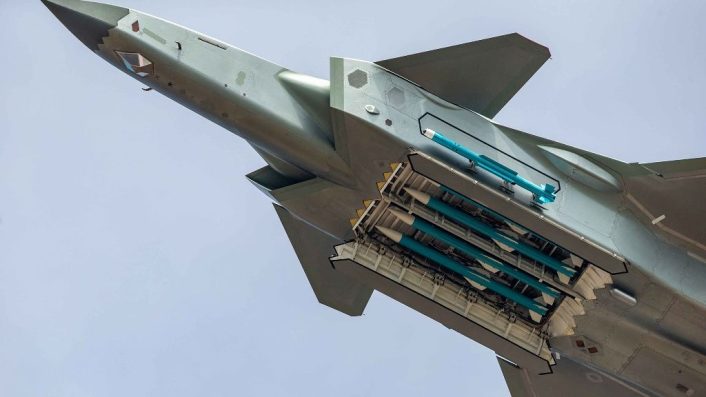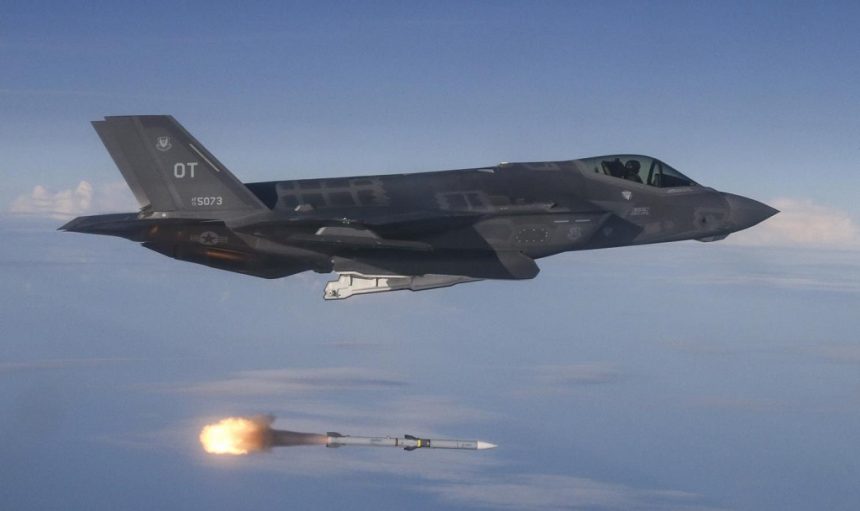The missile, developed secretly since 2017, will equip F-22, F/A-18 and F-35.
Brig. Gen. Anthony Genatempo, Air Force Weapons Program Executive Officer, announced on June 20, 2019, that Lockheed Martin is developing a new long-range air-to-air missile to replace the AIM-120 AMRAAM and counter the threat posed by the Chinese PL-15 missile.
The announcement was made in interviews with Air Force Magazine and Aerospace Daily during the Life Cycle Industry Days, held at the Dayton Convention Center in Ohio from June 19 to June 21. The AIM-260, also called Joint Advanced Tactical Missile, has been in development for at least two years, after a rapid acquisition project was initiated by Air Force and Navy in 2017 to avoid foreign threats being able to outrange the AIM-120.
Few technical details are known at this time. The new missile will be compatible with the AMRAAM (Advanced Medium Range Air-to-Air Missile) dimensions, but with greater range, and is planned to be carried in the F-22 weapons bay and on the F/A-18 at first, with the F-35 to follow. Gen. Genatempo also noted that the missile will not use ramjet propulsion, unlike the Meteor BVRAAM (Beyond Visual Range Air-to-Air Missile) operational on Eurofighters and Gripens.
The project is an advanced state, with flight tests starting in 2021 and Initial Operational Capability in 2022. The Air Force will buy the last AMRAAMs during fiscal year 2026 while the JATM ramp up to full production; it’s not known yet how many JATMs will be bought.

The AIM-120 AMRAAM, the primary weapon for BVR (Beyond Visual Range) air-to-air combat in US and NATO inventories that will be replaced by the new AIM-260, was developed in the late ‘80s and entered service in 1991. It features Active Radar Homing (ARH) with two-stage guidance, meaning that the missile can use radar mid-course updates from the firing aircraft until it reaches the range needed to use its own radar to search the target.
In 1996 the AIM-120C, a new variant with smaller control surfaces, was fielded to be carried by F-22 in its weapon bays. The operational range is classified, but estimated in excess of more than 50 nautical miles, and its top speed is Mach 4; it also features Home On Jamming (HOJ), giving the ability to detect if the missile is being jammed and to guide it towards the source of the jamming signal. This version has been continuously upgraded and has reached today the AIM-120C-7 version with improved guidance and range.
The latest version being fielded is the AIM-120D, which will be used until the JATM is fully operational and features a yet improved range estimated in over 80 NM, two-way datalink to communicate with the firing aircraft, accurate navigation using GPS-enhanced IMU (Inertial Measurement Unit) and High Off-BoreSight (HOBS) capability, meaning that it can be fired even if the target isn’t directly in front of the launcher aircraft.
The PL-15 missile, which the JATM must counter, is a Chinese missile similar in shape and dimensions to the AMRAAM. The missile, showed in the weapon bays of the Chengdu J-20 stealth fighter of the PLAAF during Zhuhai Airshow in 2018, is reported to have a range in excess of 100 nautical miles and a top speed of Mach 5. It has a dual-thrust solid propellant rocket engine that uses two different types of fuel, one for the boost phase immediately after launch and one for the sustainment phase that allows the missile to maintain its high speed without losing energy before reaching the target. The PL-15 also uses an AESA (Active Electronically Scanned Array) radar for guidance, instead of the mechanical antenna used on the AMRAAM.









